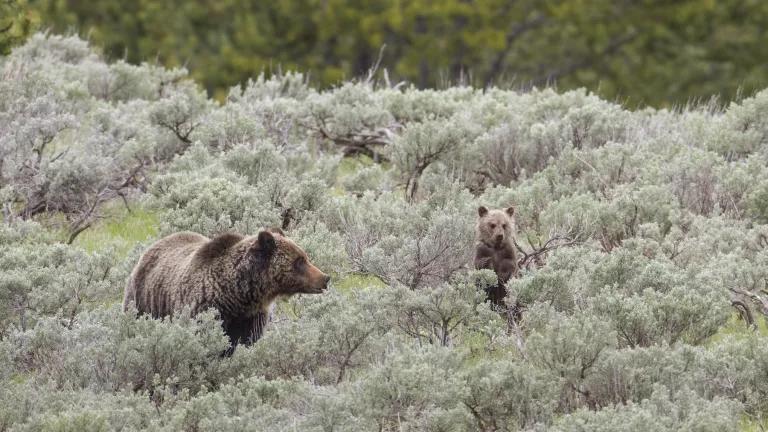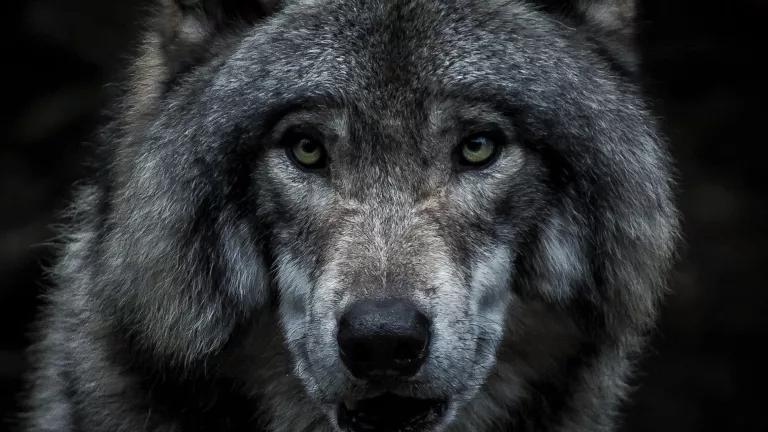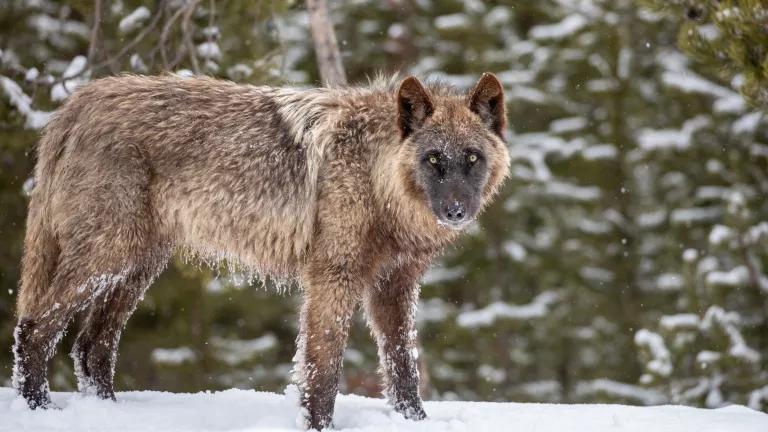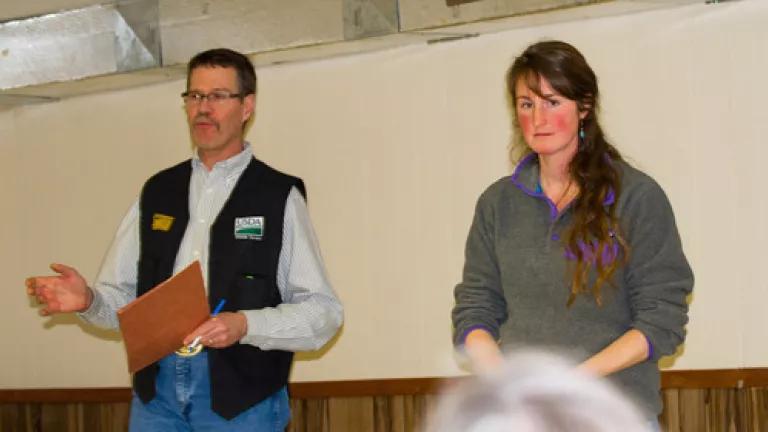
Last week, the federal agency Wildlife Services held a day-long conference in Dillon, Montana, to discuss nonlethal ways to protect livestock from native carnivores like grizzly bears and wolves. By any measure, the workshop was a huge success.
NRDC strongly supported the event--though we have long been critical of Wildlife Services' reliance on lethal measures to respond to conflicts between livestock and predators. Every year, the agency kills about 100,000 native carnivores, all too often using indiscriminate traps, snares and poisons that kill thousands of "non-target" animals, including rare, threatened and endangered species--largely at taxpayer expense.
This conference, however, was a tremendous step in the right direction toward informing livestock producers and the general public about the availability and effectiveness of a wide range of nonlethal tools and strategies.
Throughout the day, speakers presented on a variety of topics, from livestock guard dogs to range rider strategies to livestock carcass removal and compost sites to updates on regional wolf and grizzly bear populations. The audience of 80 to 90 people included about equal parts livestock owners, agency officials, and conservation organization representatives. The presentations and ensuing discussions were perceptive, productive and civil. People with a variety of backgrounds and experiences asked important questions and offered valuable insights. During the breaks, many folks got a chance to meet and talk to others who they may have otherwise never run across. Common ground was explored.
In many ways, the workshop was a landmark event. It was the first of its kind organized by Wildlife Services in the northern Rocky Mountain region. According to those I spoke with at the conference, it was also the first event of its kind to draw such a large number of livestock producers. These achievements were due to the hard work of Montana Wildlife Services state director John Steuber and his staff in organizing and promoting the event, and to the many experienced, thoughtful experts who generously gave their time to speak about the science, application, and effectiveness of nonlethal measures.
By the end of the day, I think many of our eyes had been opened to the number of tools and measures available, and to the number of people, communities and organizations actively involved in implementing them. Blackfoot Challenge wildlife coordinator Seth Wilson spoke of the achievements of the Blackfoot River ranching community in reducing wolf and grizzly conflicts over the past four decades. Dean Peterson and Chet Robertson described the efforts of the Big Hole Watershed Committee to reduce conflicts with wolves using fladry, electric fencing, range riding and other methods.
Livestock Loss Board program coordinator George Edwards and Wildlife Conservation Society biologist Kris Inman explained the benefits of removing livestock carcasses to reduce interactions between scavenging predators and livestock herds. Rancher and range rider (and NRDC partner) Hilary Zaranek described her observation that increasing human presence and keeping cattle gathered together seemed to reduce their vulnerability to predation in the Tom Miner Basin and Centennial Valley. Helle Livestock owner John Helle shared his vast experience working with livestock guard dogs to protect sheep. Many others--presenters and attendees alike--spoke of their experiences as well.
It was an inspiring, educational, uplifting day. Perhaps the most important and encouraging part was simply having so many different perspectives in the same room. Both in his opening and closing remarks, John Steuber indicated his intention to continue to hold similar workshops throughout the state. We support and appreciate these efforts by Wildlife Services, and encourage state directors around the country to organize similar events. I look forward to continuing to attend, listen and learn, and I urge anyone with an interest in protecting livestock and wildlife to do the same.
Montana Wildlife Services state director John Steuber, left, and range rider Hilary Anderson. Photo by Marc Cooke.
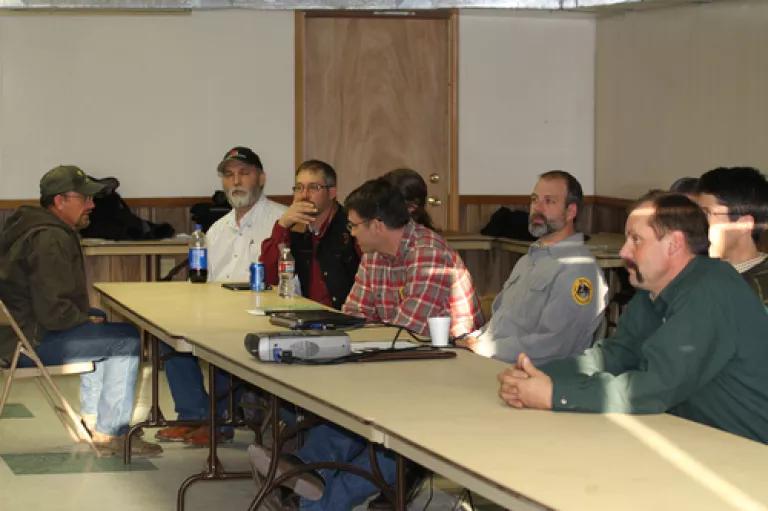
At the end of the day, the workshop presenters formed a panel and took questions from the audience. There was a wealth of experience in the room, and lots of useful information was shared and learned throughout the day. Photo by Marc Cooke.
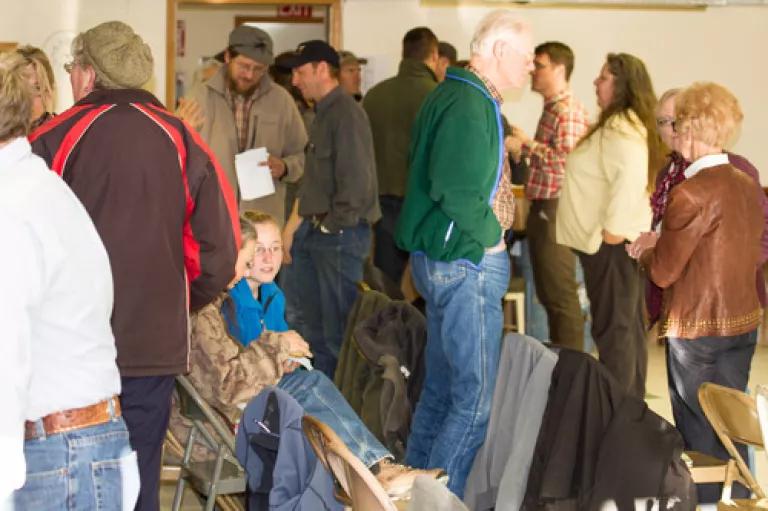
Perhaps the most important part of the day was simply having so many different perspectives in the same room. Photo by Marc Cooke.

